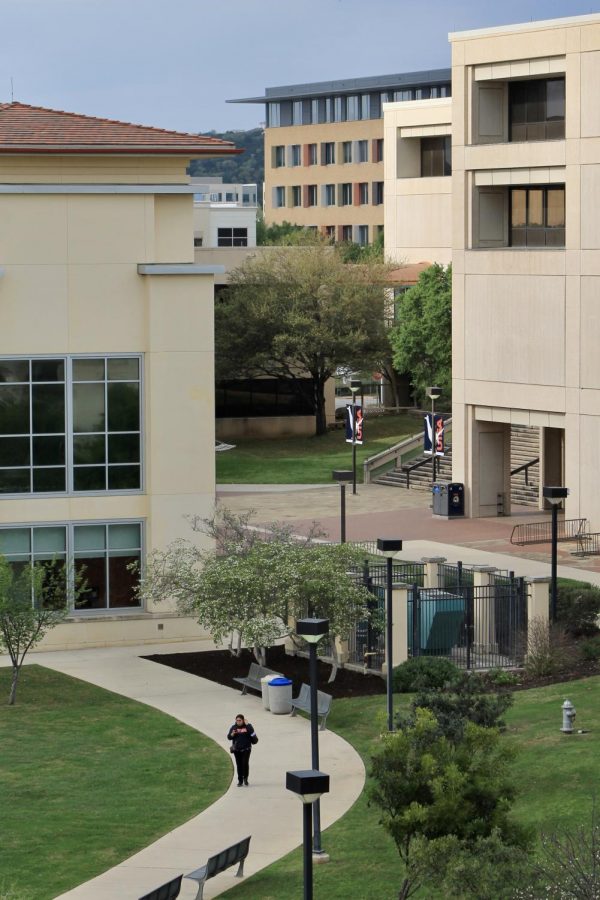

In Japan, the people’s historical understanding of spaces, distances, time, boundaries and light have formed a unique style of architecture reflected in several aspects of the Japanese society.
The history of Japanese architecture and Japan’s sensitivity to space were discussed in depth last Tuesday, April 14 as part of an insightful lecture given by Associate Dean of Architecture Taeg Nishimoto, and hosted by UTSA’s East Asian Institute.
The Japanese have a distinct perspective on their surroundings, which can be partially accredited to early Shinto spirituality, Buddhist philosophy and ancient mythology.
However, the most fundamental concept to grasp about Japanese architecture comes from the fact that Japan is an island country composed of over 6,000 tiny surrounding islands.
The geography of Japan has always played an important part in mythology. Nishimito explained one of the central ancient Shinto creationist stories of Izanagi and Izanami. The story goes that these two deities stirred the ocean waters with a giant jeweled spear to form the first land mass – Japan. The two deities married and then other islands and countries were formed.
Consequently, much of early architecture in Japan stressed the remoteness of Japan as an island. Villas and temples were built with ponds, moats or some sort of water surrounding the buildings as a metaphor for Japan.
For example, Zen Gardens, which have become popularized in America, stem from Japanese Zen-Buddhism and often have themes of circular designs in the sand representing water and several rocks representing Japanese islands. Stone paths leading to temples and shrines are often curved, which represent the flow of water. Also, since Japan has a large number of hills and mountaind, they are often incorporated in the scenery of temples and gardens.
Nishimoto presented a poem by Matsuo Basho, a famous poet during the Edo period, which helps explain how space is conceived differently by the Japanese.
Old pond — frogs jumped in — sound of water.
Nishimoto explains that “You didn’t see the frog. You don’t know where or what it is, really. You heard the frog. That is the quintessential philosophy.”
This represents that the idea of space, or the limits of space we have in our minds, are not created until someone else steps into the picture.
A great example is seen in traditional live Japanese theater, known as the ‘Noh Theatre.’ The stage of the theater is always constructed the same; it has a long narrow walkway that opens directly onto the stage, with no backstage, walls or doors blocking or separating the entryway and the actual stage.
The whole audience can see as the actors wait patiently at an imaginary boundary line separating the entryway to the stage. As soon as the actors step over this boundary –this space they and the audience have created in their minds – they automatically begin to play their roles.
Other aspects of this idea of perceived space are seen all over Japan. Often the inside of Japanese houses or buildings do not have many windows and are not well illuminated, but they have windows near the corners of the walls which cast shadows across other walls and rooms.
Nishimoto says that the casting of these shadows creates the essence of space because when “you see a shadow, then you perceive space.”
Another example of the partitioning and perception of spaces comes from Japanese bento boxes, which are essentially lunch boxes you can buy at the store. These lunch boxes always have compartments inside which assign and distinguish the different foods.
The Japanese also have a different take on the idea of time. In many cultures, infinity and eternity are emphasized over cultures and structures. For example, this is the essence of the Egyptian pyramids and Stonehenge, which are sacred structures that thousands of years old.
In Japanese ideology, however, renewal is emphasized. For example, every few decades the Japanese rebuild several of their temples and shrines. They do this to exemplify the philosophy that nothing lives forever.
Nishimoto made it clear that this was a brief introduction to Japan’s sensitivity to space, and much more can be said about the unique architecture and culturally-based perceptions of space, time and boundaries.
Nishimoto received his Masters at Cornell University and has taught at several institutes such as Columbia, Pratt and Texas A&M. He has received numerous prestigious architectural awards and has been at UTSA since 2007.











